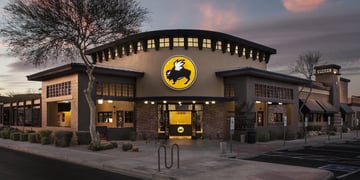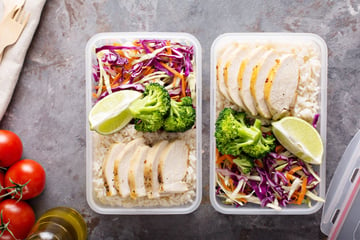There’s no doubt consumers love fast food. Fast casual dining has been on the rise since the late 2000s, and the movement has drawn the interest of food industry professionals at all levels, including chefs. In 2016, more than 1,600 chefs surveyed by the National Restaurant Association identified chef-driven fast casual concepts as a top trend, next only to local food sourcing.
Chef-driven fast casual dining provides chefs with opportunities to create signature meals in more casual settings. Consumers get food of higher quality than they would at a casual restaurant, made-to-order by esteemed chefs, and at competitive prices. It’s a delicate balance between fine dining and casual eating.
What makes the movement so popular?
In the article What's Fueling the Fast-Casual Boom, QSR Magazine identified some of the factors driving the phenomenon of fast casual concepts:
- An uncertain economy,
- Disruptive technology, and
- Convenience.
In addition, sustainability and food safety and quality are still big on consumers’ list. Chef-driven fast casual, alongside other trends such as local food sourcing, checks the boxes for sustainability, nutrition, and quality.
What’s more, the 2015 Fast-Casual Chains Survey by Zagat revealed that 65 percent of consumers are more likely to go to a place if it is gourmet or chef-driven, and 78 percent would like to see more local chefs open fast-casual eateries. Clearly, there is an opportunity for food businesses.
What are the strategies for success?
As with other food ventures, the fast casual scene faces fierce competition, especially since, on average, chef-driven meals cost more than casual meals. However, some strategies have proven helpful in this type of business.
Hybrid models. A feature article in Food NewsFeed, “Food on Fast Forward,” highlights the hybrid model which some businesses have adopted. This model combines elements of both fast and full service, offering fast casual options by day and full-service restaurant options by night. According to the report, these models allow for cross-utilization and make operations more efficient, from staffing to inventory.
Digital influence. The search for dining places often starts online. Consumers love to read reviews, check out menus, and compare prices before trying out new places. Brands winning in the fast casual scene invest in and use social media and online channels to build favorable reputations.
Story-driven branding. To really draw consumers in, you have to communicate what differentiates your restaurant from all the other fast casuals. Some restaurants build their story around their relationship with local farmers, sustainability practices, or the chef behind the menu. Whatever the case, the story has to be authentic and resonate with consumers. It all boils down to transparency.
Behind the scenes
Although speed and convenience are the main perks of the fast casual business, food safety remains a priority. Successfully managing a highly-dynamic fast casual restaurant requires a thorough understanding of the supply chain. FoodLogiQ makes it easier for restaurant operators to deliver fast and convenient meals to consumers without compromising on food safety and quality.
To learn more about how FoodLogiQ can help you manage your supply chain for safety assurance, request a demo.
Other posts you might be interested in
View All Posts
Food Industry
5 min read
| May 14, 2018
Supply Chain Visibility a Key Challenge Throughout Food Industry
Read More
Supplier Compliance
5 min read
| August 3, 2018
Food Safety Challenges of Convenience Foods
Read More
Supplier Compliance
8 min read
| May 31, 2018

